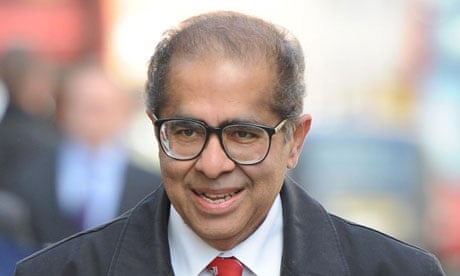Potentially significant forensic evidence into the death of Ian Tomlinson, the man allegedly killed by a riot policeman during the G20 protests in London, was thrown away because the pathologist who carried out an initial postmortem examination had by then concluded the 47-year-old died of a heart attack, a court has heard.
Dr Freddy Patel, a consultant forensic pathologist, said he took a small sample of bloody fluids found within Tomlinson's stomach cavity but poured the remaining three litres down a sink at St Pancras mortuary in London on the evening of 3 April 2009.
The smaller sample was itself later mislaid and presumed destroyed, as it was not considered relevant to the cause of death, Patel told Southwark crown court. Mark Dennis QC, prosecuting, asked Patel why he did not keep the fluid so it could be tested for signs of internal bleeding.
Patel said: "My impression was that it was more body fluid than blood. Having done my examination and having come to a cause of death in my mind, it was obvious it could not have been three litres of blood."
However, the jury heard that later postmortems concluded Tomlinson died from internal bleeding caused by a fall after PC Simon Harwood of the Metropolitan police struck him with a baton on the leg and then pushed him over, causing a heavy fall.
Video footage of the incident, as Tomlinson tried to make his way home through the City of London during protests on 1 April connected to the meeting of G20 leaders, showed him walking away from police lines, his hands in his pockets, when Harwood struck and pushed him from behind.
Dr Nat Cary, a Home Office-registered pathologist who carried out a second postmortem on 9 April, told the court it would have been possible to test the fluid for blood composition, which could in turn have offered clues as to the cause of death.
Patel concluded that severe hardening and furring to blood vessels around Tomlinson's heart was "the most significant pathological evidence".
The internal bleeding could not have caused death, he argued.
But Cary, giving evidence later, said he believed Patel's conclusions were wrong, and Tomlinson's heart failed because of internal bleeding, most likely centred on the liver, caused in turn by "the impact to the ground immediately following a shove, immediately following a baton strike". Signs of bruising to the liver offered "unequivocal evidence" of blunt force to the abdomen, caused by Tomlinson being pushed suddenly to the pavement and falling on his arm.
Even if the fluid in the stomach cavity had contained less than a litre of blood this could have been fatal, Cary said. Tomlinson's cirrhosis of the liver, caused by years of alcoholism, meant he was "a man who was very sensitive to any blood loss".
Examination of Tomlinson's heart showed none of the scarring or other signs associated with a heart attack, Cary said.
CCTV footage showing Tomlinson veer and stumble between getting up from Harwood's push and his final collapse soon afterwards indicated the "progressive downhill course" of a man with internal bleeding rather than sudden heart failure, Cary added.
Patel carried out his examination before video footage emerged showing Harwood striking and pushing Tomlinson. Asked by Mark Dennis QC, prosecuting, whether this footage or subsequent reflection had prompted a change of mind, Patel said not: "If that was the case, I would be the first to rectify the matter. I am not persuaded at all to change my conclusion."
Harwood, from Carshalton, Surrey, denies manslaughter.
The trial continues.
